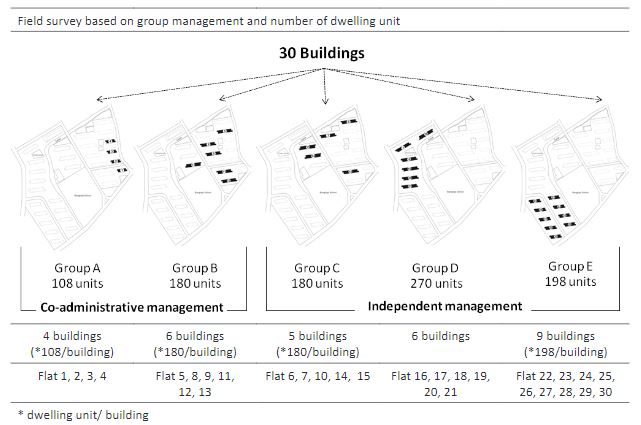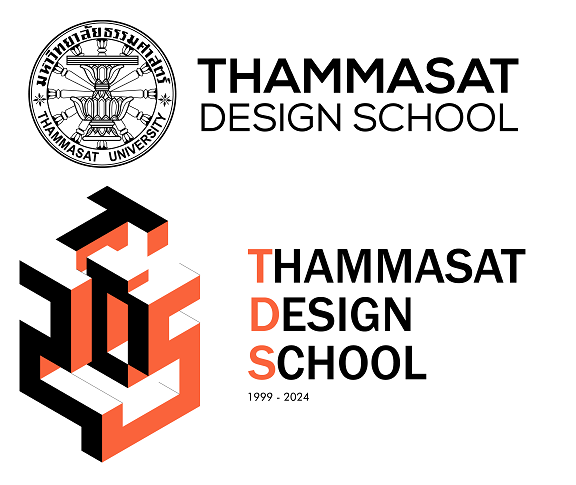Phyto-Inspired Design: Innovative Solutions for Architecture
Keywords:
Phytomimetic, Plant-inspired, Biomimetic, Sustainable, Compliant mechanism, DendriformAbstract
For a long time, designers have mainly taken inspiration from nature as a solution, defined as bio-inspired, to overcome design problems. Phyto-inspired approaches, or phytomimetics, is a subdivision of bio-inspired approaches, which focus on inspiration taken from plants with regard to materials, structures, and movements, for example. Many well-known buildings and inventions in various time periods were designed by using phytomimetic approaches based on available technologies, such as the Gothic-style fan vault in medieval churches, many works with dendriform structures designed by Gaudi, coiled extension wires, and the development of monoplane aircraft in the twentieth century. This article intends to explore the use of plant-inspired problem-solving approaches in architectural design by subdividing them into three main types of inspirations: phytomorphism, dendriform structures, and phytomechanisms. Several case studies are presented to show how architects and designers can use inspiration from plants as a potential solution for sustainable and efficient design.
Downloads
References
Ahmeti, F. (2007). Efficiency of Lightweight Structural Forms: The Case of Tree-like Structures – A Comparative Structural Analysis. Master’s Thesis submitted for the degree of “Master of Science”. MSc Program “Building Science & Technology”. TU Vienna.
Akbarzadeh, M., Van Mele, T., & Block, P. (2015). On the Equilibrium of Funicular Polyhedral Frames and Convex Polyhedral Force Diagrams. Computer-Aided Design, 63; 118-128. https://doi.org/10.1016/j.cad.2015.01.006
Architonic. (2014). Crystal Palace, London, designed by Joseph Paxton. Retrieved July 3, 2020, from https://www.architonic.com/es/story/materials-council-so-transparent-london-s-iconic-crystal-palace-reloaded-part-i/7000931
Archello. (2011). Metropol Parasol, Spain, designed by Jürgen Mayer-Hermann. Retrieved July 4, 2020, from https://archello.com/story/984/attachments/photos-videos/5
ARCHmatic. (2014). FE-simulation of the Double Flectofin. Retrieved July 5, 2020, from https://www.baulinks.de/webplugin/2014/0173.php4
Ashampoo Air & Car Services GmbH & Co. KG. (2020). Taube monoplane aircraft type. Retrieved July 3, 2020, from http://www.bredow-web.de/ILA_2004/Traditionsflugzeuge/Etrich_Taube/Flug-Taube/flug-taube.html
Asefi, M. (2010). Transformable architectural structures: Design, evaluation and application to intelligent architecture. Saarbrücken: VDM Verlag Dr. Müller Publisher.
Barthlott, W., Rafiqpoor, M.D., & Erdelen, W.R. (2016). Bionics and Biodiversity-bio-inspired Technical Innovation for a Sustainable Future. In: Knippers, J., Nicjkle, K., & Speck, T. (eds) Biomimetic Research for Architecture and Building Construction. Basel, Switzerland: Springer International Publishing.
Bridgens, B.N. (2015). Pine cones in wet and dry conditions. Retrieved July 5, 2020, from https://blogs.ncl.ac.uk/responsive-materials/files/2015/02/Sectioned-Pine-Cone.png
Bunk, K., Jonas, F.A., Born, L., Hesse, L., Möhl, C., Gresser, G.T., Knippers, J., Speck, T., & Masselter, T. (2019). From Plant Branchings to Technical Support Structures. In: Biomimetics for Architecture. Birkhäuser, Basel, Switzerland.
Burgert, I., & Fratzl, P. (2009). Actuation Systems in Plants as Prototypes for Bioinspired Devices. Philosophical Transactions of the Royal Society a Mathematical Physical and Engineering Sciences, 367(1893), 1541-57.
Charpentier, V., Hannequart, P., Adriaenssens, S., Baverel, O., Viglino, E., & Eisenman, S. (2017). Kinematic Amplification Strategies in Plants and Engineering. Smart Materials and Structures. 26 (6), 063002.
Comflex Industrial co.,Ltd. (2020). Radial braiding machine. Retrieved July 4, 2020, from http://www.braiderchina.com/product/carbon-and-glass-fiber-braiding-machine/
Desktop Nexus. (2016). Bird sits on the perch of Strelitzia reginae flower. Retrieved July 5, 2020, from https://animals.desktopnexus.com/wallpaper/2109317/
Distrol, M. (2015). Ancient Egyptian column inspired by a bundle of papyrus plants. Retrieved July 3, 2020, from https://traveltoeat.com/wp-content/uploads/2015/10/wpid-Photo-20151020215256528.jpg
Gibson, L.J., & Ashby, M.F. (1982). The Mechanics of Three-dimensional Cellular Materials. Proceedings of the Royal Society of London. A 383, 43-59.
Guo, Q., Dai, E., Han, X., Xie, S., Chao, E., & Chen, Z. (2015). Fast Nastic Motion of Plants and Bioinspired Structures. Journal of the Royal Society Interface. Vol.12, 20150598.
Itke/Körner. (2016). Basic concept geometry of Flectofold. Retrieved July 6, 2020, from https://axelkoerner.com/2016/11/15/flectofold/#jp-carousel-576
Itke. (2018). Frontal and rear view of Flectofold demonstration. Retrieved July 5, 2020, from https://www.facebook.com/itke.uni.stuttgart/photos/pcb.1926113447446568/1926113144113265
ITKE, ITFT and PGB (2018). Concrete-filled branched node made of fiber-reinforced concrete composite plastic. Retrieved July 4, 2020, from https://www.itft.uni-stuttgart.de/research/sfb-trr-141/sfb-trr-141-a06/
Halling, P. (2013). Fan vault in King’s College Chapel, England. Retrieved July 3, 2020, from https://www.geograph.org.uk/photo/5469128
Hasselaar, B.L.H. (2006). Climate Adaptive Skins: Towards the New Energy-efficient Façade. In Management of Natural Resources. Sustainable Development and Ecological Hazards. vol. 99. www.witpress.com, ISSN 1743-3541 (on-line)
Heisel, F., Schlesier, K., Lee, J., Rippmann, M., Saeidi, N., Javadian, A., Hebel, D., & Block, P. (2017). Design of a Load-bearing Mycelium Structure Through Informed Structural Engineering. Proceeding of the World Congress on Sustainable Technologies (WCST).
Howell, L.L. (2001). Compliant Mechanisms. New York: John Wiley and Sons.
Huerta, S. (2006). Structural Design in the Work of Gaudi. Architectural Science Review, Vol 49.4, 324-339.
Jonas, F.A., Born, L., Born, L., Möhl, C., Gresser, G.T., & Knippers, J.(2018). Towards Branched Supporting Structures out of Concrete-FRP Composites Inspired from Natural Branchings. Proceedings of the IASS Symposium 2018: Creativity in Structural Design, Boston, USA.
Jonas, F.A., Born, L., Möhl, C., Hesse, L., Bunk, K., Masselter, T., Speck, T., Gresser, G.T., & Knippers, J. (2019). New Branched Loadbearing Structures in Architecture. In: Biomimetics for Architecture. Birkhäuser, Basel, Switzerland.
Kameníček, J. (2019). Aldrovanda vesiculosa (Waterwheel plant). Retrieved July 5, 2020, from https://www.biolib.cz/en/image/id378810/?orderby=2&uid=931
Körner, A., Born, L., Mader, A., Saches, R., Saffarian, S., Westermeier, A.S., Poppinga, S., Bischoff, M., Gresser, G.T., Milwich, M., Speck, T., & Knipper, J. (2018). Flectofold – a Biomimetic Compliant Shading Device for Complex Free Form Facades. Smart Materials and Structures. Vol. 27, IOP Publishing Ltd. UK.
Kwan, K. et al. (2013). A Mathematical Model on Water Redistribution Mechanism of the Siesmonastic Movement of Mimosa Pudica. Biophysical Journal. vol.105, no.1, 266-275.
Lienhard, J. (2014). Bending Active Structures: Form-finding Strategies Using Elastic Deformation in Static and Kinematic Systems and Structural Potential Therein. PhD Thesis, ITKE, University of Stuttgart.
Lipman, J., & Wright, F.L. (2003). Frank Lloyd Wright and the Johnson Wax Buildings. New York, USA: Courier Dover Publication.
López, M., Rubio, R., Martin, S., & Croxford, B. (2017). How Plants Inspire Facades. From Plants to Architecture: Biomimetic Principles for the Development of Adaptive Architectural Envelopes. Renewable and Sustainable Energy Reviews. Vol. 67, 692-703.
Luchsinger, R.H., Predretti, M., & Reinhard, A. (2004). Pressure Induced Stability: From Pneumatic Structures to Tensairity. Journal of Bionics Engineering. Vol. 1, 41-148.
MaItaly. (2011). Baldacchino designed by Gian Lorenzo Bernini. Retrieved July 3, 2020, from https://maitaly.files.wordpress.com/2011/04/interiorvaticano8.jpg
Martin, G.A. (2020). Barbed wire, imitating thorny branches of the Osage orange. Retrieved July 3, 2020, from https://smallfarmersjournal.com/barbed-wire-history-and-varieties/
Menges, A. (2012). Biomimetic Design Processes in Architecture: Morphogenetic and Evolutionary Computational Design. IOP Science. Bioinspiration & Biomimetics, 7, 15003.
Menges, A. (2013). Hygroskin Meteorosensitive Pavilion designed by Achim Menges. Retrieved July 5, 2020, from http://www.achimmenges.net/?p=5612
Nerdinger, W. (2005). Frei Otto Complete Works: Lightweight Construction Natural Design. Birkhäuser, Basel; Boston; Berlin.
Noll, P. (2017). Umbel structural systems. Retrieved July 4, 2020, from http://www.paulnoll.com/Oregon/Wildflower/Flora/flower-inflorescence-choices-04.html
Ürge-Vorsatz, D., Cabeza, L.F., Serrano, S., Barreneche, C., & Petrichenko, K. (2015). Heating and Cooling Energy trends and drivers in buildings. Renew Sustain Energy Rev. Vol. 41, 85-89.
Pawlyn, M. (2011). Biomimicry in Architecture. London: RIBA Publishing.
Paris Adèle. (2017). Paris Métro entrances designed by Hector Guimard. Retrieved July 3, 2020, from http://parisadele.com/portfolio/porte-dauphine-metro/
Pennisi, E. (2020). Dionaea muscipula (Venus Flytrap). Retrieved July 5, 2020, from https://www.sciencemag.org/news/2020/05/how-venus-flytraps-evolved-their-taste-meat
Poppinga, S., Masselter, T., Lienhard, J., Schleicher, S., Knipper, J., & Speck, T. (2010). Plant Movements as Concept Generators for Deployable Systems in Architecture. WIT Transactions on Ecology and the Environment. Vol. 138. Southampton: WIT Press.
Poppinga, S., Kampowski, T., Metzger, A. et al. (2016). Comparative Kinematical Analyses of Venus Flytrap (Dionaea muscipula) Snap-traps. Beilstein Journal Nanotechnology, Vol. 7, 664-674.
Portoghesi, P. (2000). Nature and Architecture, Skira editore, Milan.
Raingod. (1995). Capital of Corinthian order inspired by Acanthus plants in Classical architecture. Retrieved July 3, 2020, from https://raingod.com/photos/asia/jordan/jerash/corinthian-capital/
Rian, L.Md., & Sassone, M. (2014). Tree-inspired Dendriforms and Fractal-like Branching Structures in Architecture: A Brief Historical Overview. Frontiers of Architectural Research 3, 298-323.
Sandak, A., Sandak, J., Brzezicki, M., & Kutnar, A. (2019). Bio-Based Building Skin. Singapore: Springer Nature Singapore Pte Ltd.
San Ha, N., & Lu, G. (2019). A Review of Recent Research on Bio-inspired Structures and Materials for Energy Absorption Applications. Composites Part B: Engineering. Vol. 181, 107496.
Schlaich Bergermann Partner. (2019). Umbel structural systems. Retrieved July 4, 2020, from https://www.sbp.de/en/project/airport-stuttgart-terminal-3/
Schleicher, S. (2016). Bio-inspired Compliant Mechanisms for Architectural Design: Transferring Bending and Folding Principles of Plant Leaves to Flexible Kinetic Structures. Dissertation thesis. Stuttgart: ITKE.
Schumacher, M., Schaeffer, O., & Vogt, M.-M. (2010). Move architecture in motion-dynamic components and elements. Basel, Switzerland: Birkhäuser Verlag.
Senosiain, J. (2003). Bio-architecture. Architectural Press: Oxford and Harmondsworth.
Singh, A., & Nayyar, N. (2015). Biomimicry-an Alternative Solution to Sustainable Buildings. Journal of Civil Engineering and Environmental Technology, 96-101.
Speck, T., & Speck, O. (2008). Process Sequences in Biomimetic Research Design. Design and Nature IV ed C.A. Brebbia, Southampton: WIT Press.
Speck, T. (2015). Approaches to Bio-inspiration in Novel Architecture. In: Imhof, B. and Gruber, P. (eds). Built to grow – Blending Architecture and Biology. Birkhäuser Verlag, Basel.
Stahlberg, R. (2009). The Phytomimetic Potential of Three Types of Hydration Motors that Drive Nastic Plant Movements. Mechanics of Materials, vol.41, issue.10.
StateTech. (2018). Extendable wire, imitating from the tendrils of the climbing cucumber. Retrieved July 3, 2020, from https://statetechmagazine.com/article/2018/04/state-and-local-governments-cut-cord-make-way-workspace-transformation
Transsolar Energietechnik GmbH. (2020). Adaptable kinematic façade of One Ocean Pavilion. Retrieved July 5, 2020, from https://transsolar.com/projects/one-ocean-pavillon-expo-2012
Tanzilo, B. (2018). Mushroom-shaped columns designed by Frank Lloyd Wright. Retrieved July 4, 2020, from https://onmilwaukee.com/articles/racine-spelunking-sc-johnson
Teteris, C. (2017). MycoTree developed by Block Research Group at ETH Zürich. Retrieved July 4, 2020, from https://block.arch.ethz.ch/brg/project/mycotree-seoul-architecture-biennale-2017
Varma, P. (2018). Zonania seed. Retrieved July 3, 2020, from https://alchetron.com/Alsomitra-macrocarpa#alsomitra-macrocarpa-e46ad9f5-cdab-4645-ab25-b35da8cd21f-resize-750.jpeg
Von Gleich, A. (2007). Berechtigung und Reichweite des ‘bionischen Versprechens’. Bionik: Patente aus der Natur. 3. Bremen Bionik-Kongress.
Westermeier, A., Poppinga, S., Körner, A., Born, L., Sachse, R., Saffarian, S., Knippers, J., Bischoff, M., Gresser, G.T., & Speck, T. (2019). No Joint Ailments: How Plants Move and Inspire Technology. In: Biomimetics for Architecture. Basel, Switzerland: Birkhäuser.
Whitesides, G.M. (2015). Bioinspiration: Something for Everyone. Interface Focus. Vol. 5(4), 20150031.
Yin, C. (2011). Autonomous, turgor-dependent leaflet movement in Mimosa pudica driven by the pulvinus. Retrieved July 5, 2020, from http://becreativecharlotte.blogspot.com/2011/10/bioc-1-individual-ideation-sensitive.html
Zander, B. (2012). Tree-like shape columns of Sagrada Familia. Retrieved July 3, 2020, from https://www.artworknetwork.com/artdetail/columns-in-sagrada-fam%C3%ADlia-barcelona-609

Downloads
Published
How to Cite
Issue
Section
License
Copyright (c) 2020 International Journal of Building, Urban, Interior and Landscape Technology (BUILT)

This work is licensed under a Creative Commons Attribution-NonCommercial-NoDerivatives 4.0 International License.











